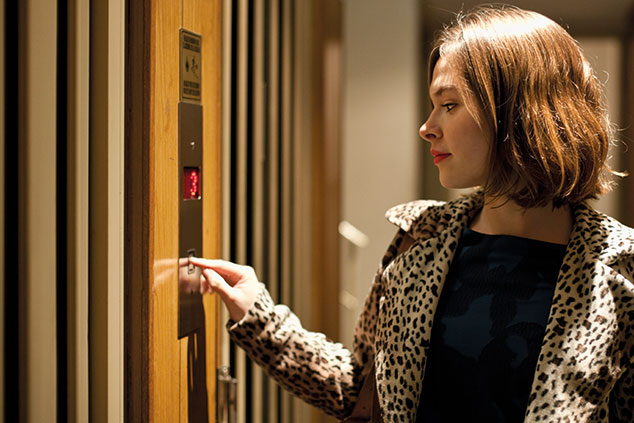
Elevator components-maker Dewhurst is one of the market’s most reliable yet overlooked small caps.
One of the more dependable smaller companies listed on the Aim junior market, Dewhurst (LSE: DWHA), has had an eventful June. The company, which supplies the keypad, lift and rail industries with components, bought electrical wholesaler A&A – like Dewhurst, a family business – and a few days later revealed a 5% drop in revenue and a 19% fall in operating profit in the half-year to the end of March.
Had it not been for the strengthening pound and the sale of part of a US subsidiary, revenue would have increased very modestly. However, Dewhurst also revealed that revenue from cash-machine keypads has fallen.
This is news shareholders are going to have to get used to. Dewhurst makes the keypads in Hungary for one customer, believed to be NCR, and it thinks demand will continue to decline as cashless methods of payment gain acceptance.
Keypad sales are in decline
Keypads have not been a growth market for Dewhurst for a long time, though. In a typical year, such as 2017, the company rakes in about £10m from their sale, and because Dewhurst’s lift-component business has grown over the same period, revenue from keypads has diminished from about 34% of the total in 2006 to 18% in 2017, when Dewhurst achieved record overall sales of £52m.
For seasoned followers of Dewhurst, the acquisition of A&A may not have been much of a surprise. Over the past two decades, the company has built on its strengths as a pioneering designer and manufacturer of lift buttons in two ways.
It has broadened its product range to include just about every lift component, from hall lanterns to cab-operating panels (and, through the acquisition of Thames Valley Controls many years ago, the brains of the lift). It has also bought some of the companies it knows best, notably the distributors and fitters of lift components.
A&A is the latest in a string of acquisitions. In 2013 it snapped up Australian firm Dual Engraving, which had been a customer of Dewhurst’s subsidiary, Lift Material Australia. In 2017, Dewhurst acquired P&R Liftcars in Sydney for its other antipodean subsidiary Australian Lift Components, which Dewhurst had taken over in 2000.
Earlier this decade, Dewhurst acquired Los Angeles-based Elevator Research & Manufacturing. Over the past ten years, revenue from the UK has been decidedly flat, and Dewhurst has depended on overseas sales for growth. The one surprise about A&A, which distributes a wide range of electrical products but specialises in lift components, is that it is based in the UK.
Why is the stock ignored?
Dewhurst shares are rarely in favour. A combination of steady but unspectacular growth is not sufficient to interest speculators, and the Dewhurst family’s ownership of more than 50% of the shares puts off the institutions.
But for a company plugging a large pension deficit, it generates significant cash flows and it has used them to develop a diverse product range and a global presence spanning North America, Europe and Asia.
A remarkable 60% surge in the share price in the first three months of this year put the firm in the limelight, but the price has since lost half the gains. At around 900p, the valuation is more reasonable. Dewhurst’s debt-adjusted price/earnings ratio is approximately 17.
Kicking the tyres… of an acquisition
It can be difficult to judge acquisitions of private businesses because they typically publish much less information than listed ones. But in this case it’s not too hard to gauge what Dewhurst thinks it will get out of its purchase of A&A.
It is paying £10.5m up front for A&A in cash, and a further 25% of A&A’s pre-tax profit over the next two years. Dewhurst estimates that the additional payment will be £1.5m, suggesting A&A will earn £6m in pre-tax profit, perhaps £3m a year. If Dewhurst earns £3m a year from its investment of £12m, the return would be 25%.
If A&A can sustain that level of profit for longer, Dewhurst could earn its money back in just four years. Using back-of-the-fag-packet arithmetic, it looks as if Dewhurst has bagged a bargain.
It’s also worth noting that, in Dewhurst’s own terms, A&A is cheap at the price. Dewhurst has favoured acquisitions in Australia, partly because they provide geographical diversification from the capricious UK market, but also because they trade on cheaper valuations. A&A looks positively Australian.
Dewhurst’s finance director has told me that Australian businesses typically pay back Dewhurst’s investment in four years. In the UK the payback period is typically six years, and in the US it’s eight.
The strategic rationale for buying a UK firm is less obvious, although a UK acquisition won’t upset Dewhurst’s geographical balance much. The £14m revenue Dewhurst earned here in the year to December 2017 was less than it made in its other two big markets.
The deal might also improve Dewhurst’s profit margins at home, which are weaker than those overseas. Filings at Companies House show that A&A is highly profitable, but like Dewhurst in the UK, it has struggled to grow sales.